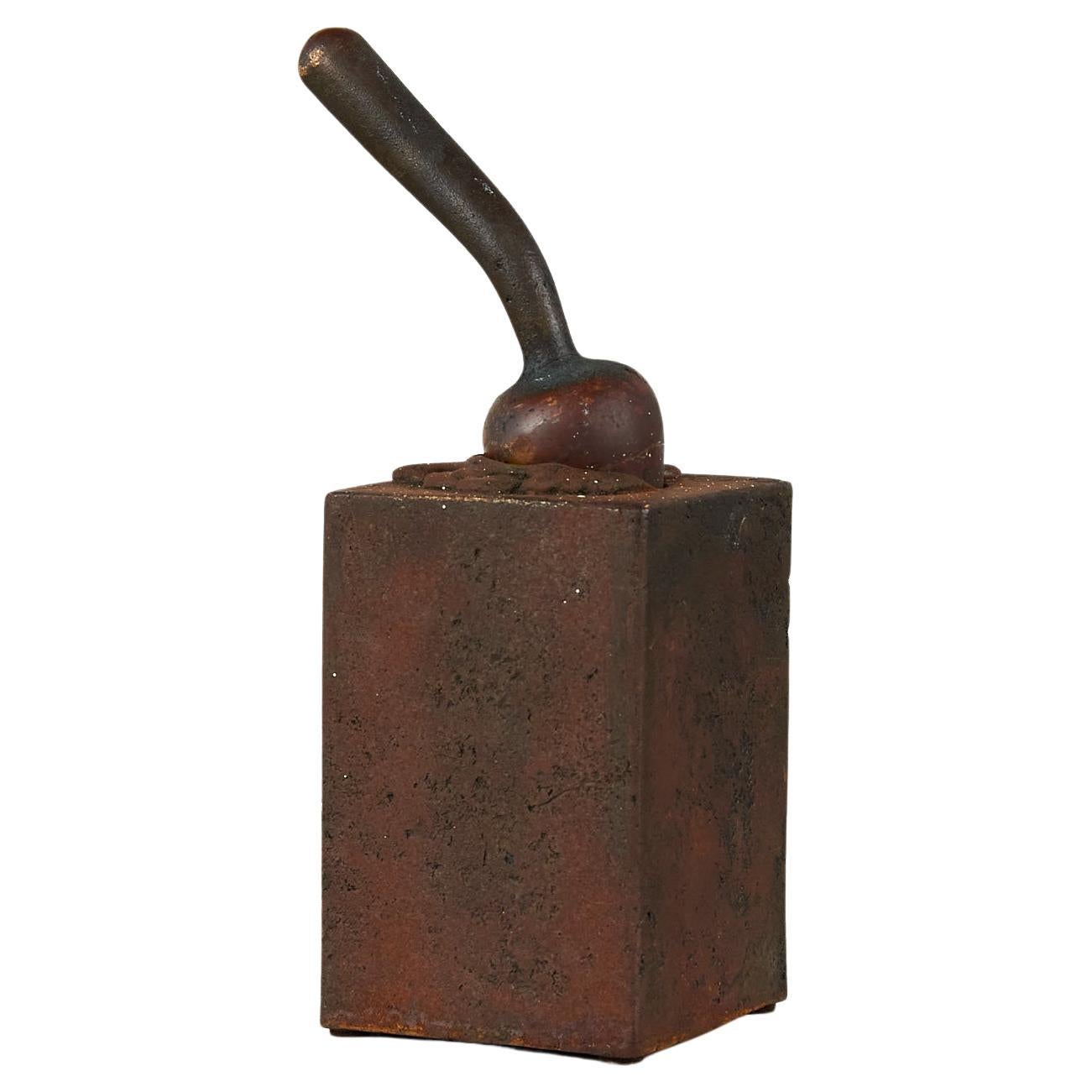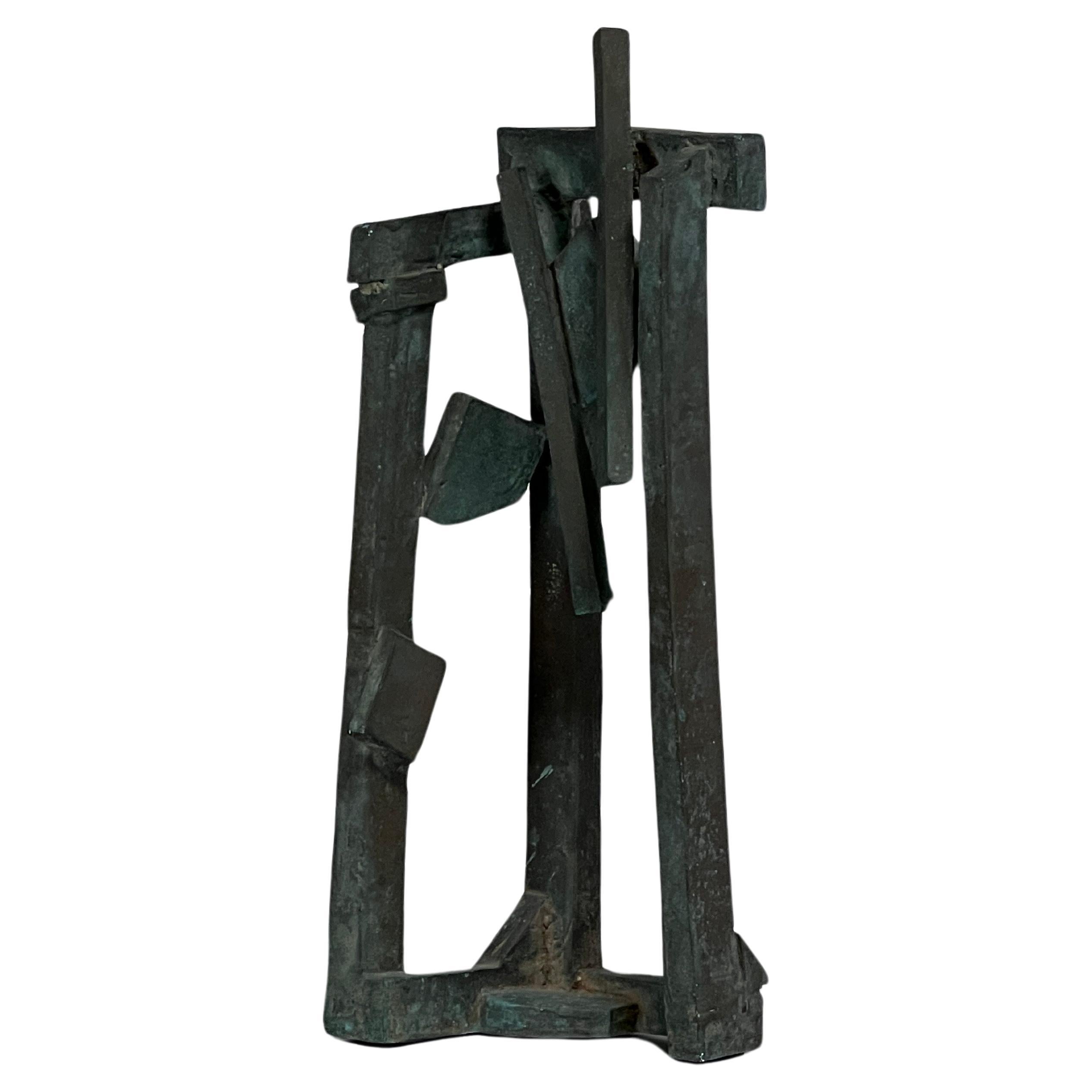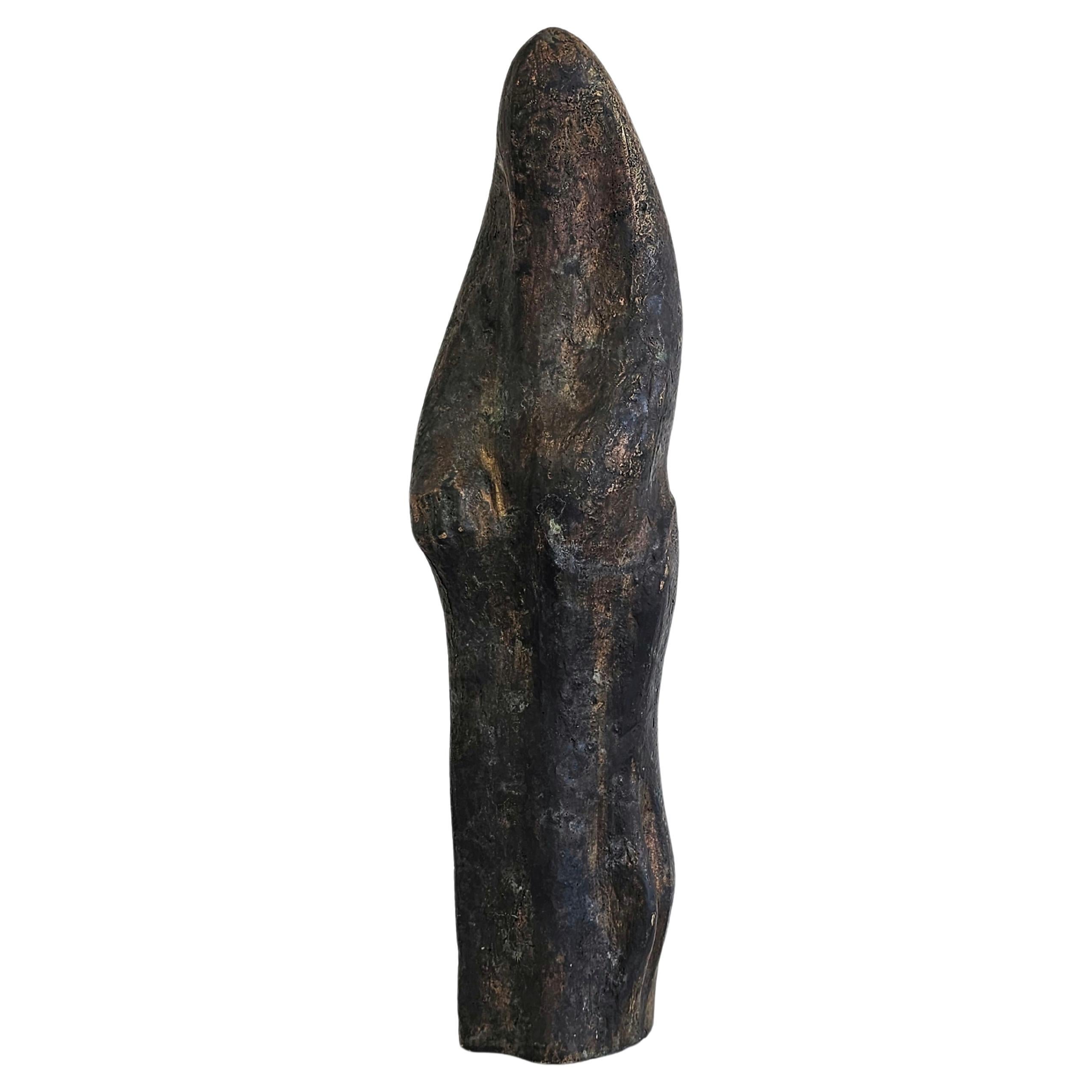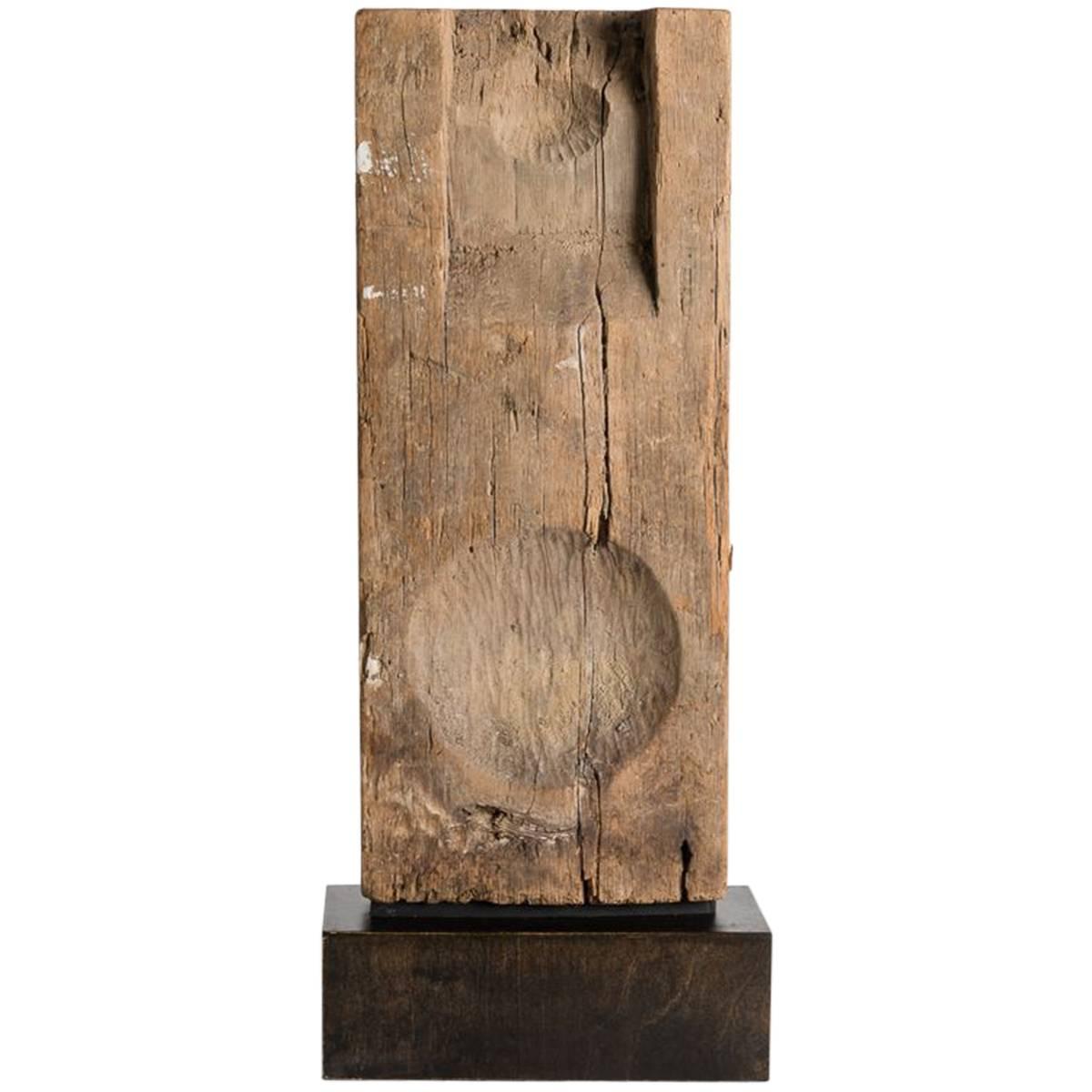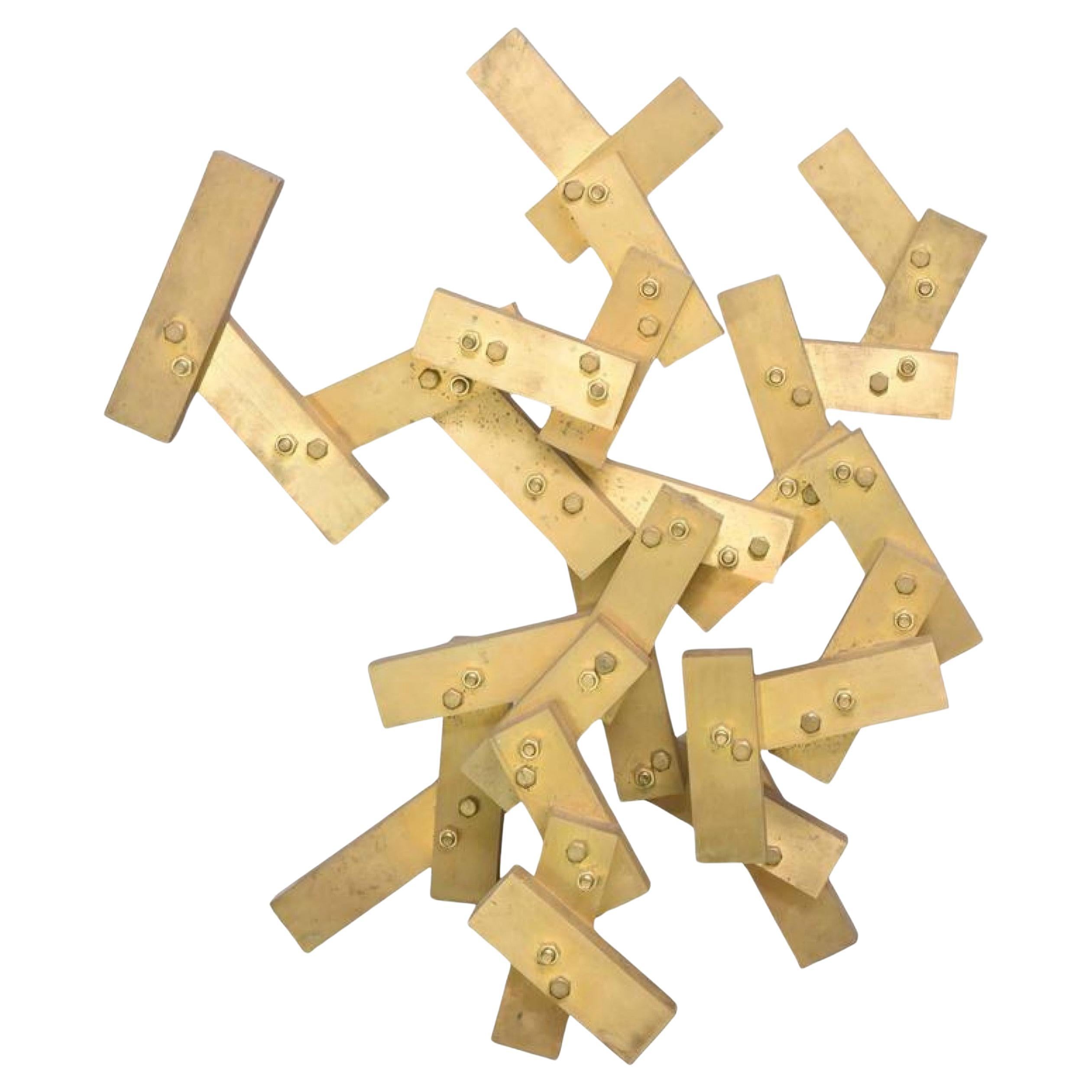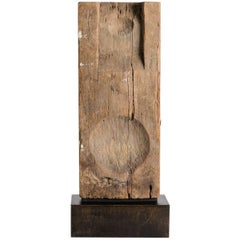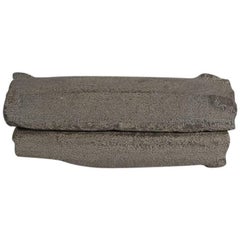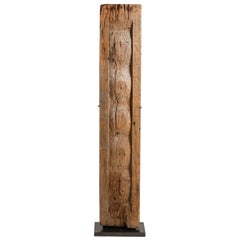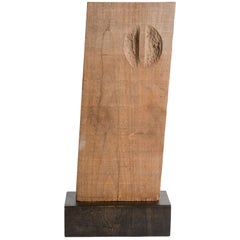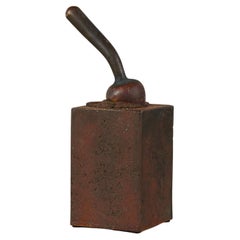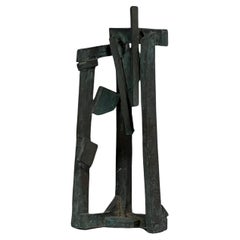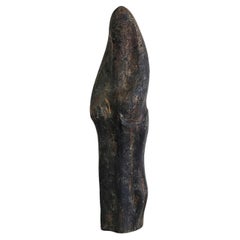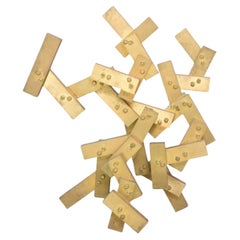Items Similar to Yongjin Han, Untitled, Sculpture in Bronze, United States, 1996
Want more images or videos?
Request additional images or videos from the seller
1 of 9
Yongjin Han, Untitled, Sculpture in Bronze, United States, 1996
$40,000
£30,186.90
€34,559.44
CA$56,413.26
A$61,934.73
CHF 32,311.48
MX$749,496.41
NOK 404,974.23
SEK 381,592.20
DKK 257,976.97
About the Item
Yongjin Han was born in Seoul, South Korea in 1934. After the Korean War—in which he fought, lying about his age in order to enlist—he was one of six students admitted to the sculpture program at the Seoul National University. At the time of his enrollment little of his native city remained intact; nonetheless, he had never felt more responsible to his work, firm in the conviction that artistic expression is every bit as essential to life and human nature as eating, drinking, or breathing.
One of Han’s teachers was Kim Chong Yung, a pioneer of Korean abstract sculpture, and by the time of his graduation he had adopted the abstraction that had seized both Europe and the United States several years before. . In 1967 he relocated to the USA, where he studied at Dartmouth and Columbia. Over the course of his long career the artist returned to Korea with frequency and made extended stays in Japan and Europe.
Trips to Korea signified something more than mere homesickness: Han’s work, though made largely in America, remained grounded in his rich cultural heritage. Korea rests on a bedrock of granite, and freestanding sculpture produced of the stone has for centuries demarcated sites of historical and religious significance. Han’s sculpture bridges this past with modernity. Richard A. Born, former Curator at the Smart Museum at the University of Chicago, has said that Han “brought Korea’s tradition of direct stone carving out of figuration into a refined, non-objective abstraction.”
For his part, Han put very little stock in designations; his focus, instead, was on the stone itself. His pieces explore a certain harmonization with nature. Han, when describing his work, said, "As stone has been around since the beginning of time, it has much to teach us if we care to slow down and listen." He believed that each stone has its own history, character, and energy and that his task was to draw out these inherently spiritual qualities. He described his process as a “dialogue” with his material: "The stone tells me it has an itch in a certain spot, so I scratch it—and we both feel better!"
Han worked alone and with manual tools, and the process is arduous. Carving stone this way takes time, and, what’s more, required great force—yet Han’s sculptures, even the monumental ones, are, as friend and fellow artist David Parker says, “all gentle grace and warmth” … [the sculptor] “engages with the stone as an equal—like wayfarers meeting on a path, Han and a stone spend time together and when they part, both are marked and changed forever.”
Yongjin Han's career spanned decades and continents, and included several prestigious large-scale public commissions. In Seoul his work can be found at the National Museum of Contemporary Art, the IE Young Museum of Contemporary Art, the Whanki Museum, the Ewha Woman’s University Museum, Posong High School, and the 88 Olympics Seonsu Village. His sculptures are held in a variety of public and private collections throughout the world, notably by the Herning Kunst Museum in Denmark; the Smart Museum of Art, University of Chicago; and the Sculpture Park at City Hall, Redding, CA.
- Creator:Yongjin Han (Artist)
- Dimensions:Height: 5 in (12.7 cm)Width: 22.5 in (57.15 cm)Depth: 8.5 in (21.59 cm)
- Materials and Techniques:
- Place of Origin:
- Period:
- Date of Manufacture:1996
- Condition:
- Seller Location:New York, NY
- Reference Number:Seller: HANY 351stDibs: LU781333214562
About the Seller
5.0
Recognized Seller
These prestigious sellers are industry leaders and represent the highest echelon for item quality and design.
Established in 1974
1stDibs seller since 2003
208 sales on 1stDibs
Typical response time: 10 hours
Associations
The Art and Antique Dealers League of America20th Century SpecialistsAntiques Associations Members
- ShippingRetrieving quote...Shipping from: New York, NY
- Return Policy
Authenticity Guarantee
In the unlikely event there’s an issue with an item’s authenticity, contact us within 1 year for a full refund. DetailsMoney-Back Guarantee
If your item is not as described, is damaged in transit, or does not arrive, contact us within 7 days for a full refund. Details24-Hour Cancellation
You have a 24-hour grace period in which to reconsider your purchase, with no questions asked.Vetted Professional Sellers
Our world-class sellers must adhere to strict standards for service and quality, maintaining the integrity of our listings.Price-Match Guarantee
If you find that a seller listed the same item for a lower price elsewhere, we’ll match it.Trusted Global Delivery
Our best-in-class carrier network provides specialized shipping options worldwide, including custom delivery.More From This Seller
View AllYongjin Han, Piece of Wood, Sculpture, United States, 1976
By Yongjin Han
Located in New York, NY
Yongjin Han was born in Seoul, South Korea in 1934. After the Korean War—in which he fought, lying about his age in order to enlist—he was one of six students admitted to the sculpture program at the Seoul National University. At the time of his enrollment little of his native city remained intact; nonetheless, he had never felt more responsible to his work, firm in the conviction that artistic expression is every bit as essential to life and human nature as eating, drinking, or breathing.
One of Han’s teachers was Kim Chong Yung, a pioneer of Korean abstract sculpture, and by the time of his graduation he had adopted the abstraction that had seized both Europe and the United States several years before. . In 1967 he relocated to the USA, where he studied at Dartmouth and Columbia. Over the course of his long career the artist returned to Korea with frequency and made extended stays in Japan and Europe.
Trips to Korea signified something more than mere homesickness: Han’s work, though made largely in America, remained grounded in his rich cultural heritage. Korea rests on a bedrock of granite, and freestanding sculpture produced of the stone has for centuries demarcated sites of historical and religious significance. Han’s sculpture bridges this past with modernity. Richard A. Born, former Curator at the Smart Museum at the University of Chicago, has said that Han “brought Korea’s tradition of direct stone carving out of figuration into a refined, non-objective abstraction.”
For his part, Han put very little stock in designations; his focus, instead, was on the stone itself. His pieces explore a certain harmonization with nature. Han, when describing his work, said, "As stone has been around since the beginning of time, it has much to teach us if we care to slow down and listen." He believed that each stone has its own history, character, and energy and that his task was to draw out these inherently spiritual qualities. He described his process as a “dialogue” with his material: "The stone tells me it has an itch in a certain spot, so I scratch it—and we both feel better!"
Han worked alone and with manual tools, and the process is arduous. Carving stone this way takes time, and, what’s more, required great force—yet Han’s sculptures, even the monumental ones, are, as friend and fellow artist David Parker...
Category
Late 20th Century American Abstract Sculptures
Materials
Wood
Yongjin Han, Two Pieces of Bluestone, Sculpture, United States, 2010
By Yongjin Han
Located in New York, NY
Yongjin Han was born in Seoul, South Korea in 1934. After the Korean War—in which he fought, lying about his age in order to enlist—he was one of six students admitted to the sculpture program at the Seoul National University. At the time of his enrollment little of his native city remained intact; nonetheless, he had never felt more responsible to his work, firm in the conviction that artistic expression is every bit as essential to life and human nature as eating, drinking, or breathing.
One of Han’s teachers was Kim Chong Yung, a pioneer of Korean abstract sculpture, and by the time of his graduation he had adopted the abstraction that had seized both Europe and the United States several years before. . In 1967 he relocated to the USA, where he studied at Dartmouth and Columbia. Over the course of his long career the artist returned to Korea with frequency and made extended stays in Japan and Europe.
Trips to Korea signified something more than mere homesickness: Han’s work, though made largely in America, remained grounded in his rich cultural heritage. Korea rests on a bedrock of granite, and freestanding sculpture produced of the stone has for centuries demarcated sites of historical and religious significance. Han’s sculpture bridges this past with modernity. Richard A. Born, former Curator at the Smart Museum at the University of Chicago, has said that Han “brought Korea’s tradition of direct stone carving out of figuration into a refined, non-objective abstraction.”
For his part, Han put very little stock in designations; his focus, instead, was on the stone itself. His pieces explore a certain harmonization with nature. Han, when describing his work, said, "As stone has been around since the beginning of time, it has much to teach us if we care to slow down and listen." He believed that each stone has its own history, character, and energy and that his task was to draw out these inherently spiritual qualities. He described his process as a “dialogue” with his material: "The stone tells me it has an itch in a certain spot, so I scratch it—and we both feel better!"
Han worked alone and with manual tools, and the process is arduous. Carving stone this way takes time, and, what’s more, required great force—yet Han’s sculptures, even the monumental ones, are, as friend and fellow artist David Parker...
Category
21st Century and Contemporary American Abstract Sculptures
Materials
Stone
Yongjin Han, a Piece of Wood, Sculpture, United States, 1976
By Yongjin Han
Located in New York, NY
Unique piece.
Sculpted in 1976, this is a rare piece for the famed sculptor Yongjin Han, who usually worked in stone. Nonetheless, it is a quintessential example of his serene com...
Category
Late 20th Century American Abstract Sculptures
Materials
Wood
Yongjin Han, a Piece of Wood, Sculpture, United States, 1976
By Yongjin Han
Located in New York, NY
Yongjin Han was born in Seoul, South Korea in 1934. After the Korean War—in which he fought, lying about his age in order to enlist—he was one of six students admitted to the sculpture program at the Seoul National University. At the time of his enrollment little of his native city remained intact; nonetheless, he had never felt more responsible to his work, firm in the conviction that artistic expression is every bit as essential to life and human nature as eating, drinking, or breathing.
One of Han’s teachers was Kim Chong Yung, a pioneer of Korean abstract sculpture, and by the time of his graduation he had adopted the abstraction that had seized both Europe and the United States several years before. . In 1967 he relocated to the USA, where he studied at Dartmouth and Columbia. Over the course of his long career the artist returned to Korea with frequency and made extended stays in Japan and Europe.
Trips to Korea signified something more than mere homesickness: Han’s work, though made largely in America, remained grounded in his rich cultural heritage. Korea rests on a bedrock of granite, and freestanding sculpture produced of the stone has for centuries demarcated sites of historical and religious significance. Han’s sculpture bridges this past with modernity. Richard A. Born, former Curator at the Smart Museum at the University of Chicago, has said that Han “brought Korea’s tradition of direct stone carving out of figuration into a refined, non-objective abstraction.”
For his part, Han put very little stock in designations; his focus, instead, was on the stone itself. His pieces explore a certain harmonization with nature. Han, when describing his work, said, "As stone has been around since the beginning of time, it has much to teach us if we care to slow down and listen." He believed that each stone has its own history, character, and energy and that his task was to draw out these inherently spiritual qualities. He described his process as a “dialogue” with his material: "The stone tells me it has an itch in a certain spot, so I scratch it—and we both feel better!"
Han worked alone and with manual tools, and the process is arduous. Carving stone this way takes time, and, what’s more, required great force—yet Han’s sculptures, even the monumental ones, are, as friend and fellow artist David Parker...
Category
Vintage 1970s American Abstract Sculptures
Materials
Wood
Yongjin Han, a Piece of Stone, Sculpture, United States, 2002
By Yongjin Han
Located in New York, NY
A piece of stone, a sculpture by Korean-American artist Yongjin Han.
Category
21st Century and Contemporary American Abstract Sculptures
Materials
Granite
Yongjin Han, a Piece of Stone, Sculpture, United States, 2002
By Yongjin Han
Located in New York, NY
A piece of stone, a sculpture by Korean-American artist Yongjin Han.
Category
21st Century and Contemporary American Abstract Sculptures
Materials
Granite
You May Also Like
Brass and Steel Abstract Sculpture
Located in Los Angeles, CA
This bronze and steel sculpture features a brass pestle that sits atop a steel mortar. Though not an actual mortar and pestle, this piece resembles just t...
Category
Mid-20th Century American Mid-Century Modern Abstract Sculptures
Materials
Brass, Steel
Bronze Sculpture by Joel Perlman
Located in Dallas, TX
Though small in scale this 1982 bronze by Joel Perlman (b. 1943) is big in visual impact. A successful New York City sculptor for the last 30 years his work is in the permanent colle...
Category
Vintage 1980s American Abstract Sculptures
Materials
Bronze
Abstract Modernist Bronze Sculpture by Ivan Kozaric, Yugoslavia 1960s
Located in Beograd, RS
Abstract, modernist sculpture done in bronze by pne of the leading Yugolsav artists, Ivan Kožarić. The work is signed on the back of the sculpture.
Modernist sculptor Ivan Kožarić, ...
Category
Vintage 1960s Croatian Modern Abstract Sculptures
Materials
Bronze
Large and Rare American Abstract Bronze Sculpture, Larry Mohr
Located in Queens, NY
Large and Rare American Abstract Bronze Sculpture, Larry Mohr
Category
20th Century American Modern Abstract Sculptures
Materials
Bronze
Sculptural Art Piece Textured Bronze Tray
Located in Chula Vista, CA
Vintage sculptural art piece handsomely rugged dish trinket tray
rough bronze
5.75 x 2 x .5 inches
Original preowned unrestored vintage condition.
Refer to images please.
Category
Vintage 1950s Mexican Organic Modern Abstract Sculptures
Materials
Bronze
Bronze Sculpture by Aglae Liberaki, 20th Century
By Aglaé Libéraki 1
Located in Saint-Ouen, FR
Aglae Liberaki (1923 – 1985).
Bronze sculpture.
Lost wax.
Foundry’s mark Valsuani.
Monogram et dated 72.
Category
20th Century Abstract Sculptures
Materials
Bronze
More Ways To Browse
Woven Metal Sculpture
Yves Rhaye
Zoe Powell
Andree Michel Hirlet
Anna Torfs
Artefacto Furniture
Bertoia Style Sculpture
Carole Harrison
Corbin Bronze
Feliciano Bejar Magiscope
Jiri Jelinek
Murano Christmas Tree
Murano Glass Christmas Tree
Pendulum Sculpture
Saint Ambrose
Steel Glass Sculpture Of Butterfly
Table Sculpture Geometric
Teal Glass Sculpture
